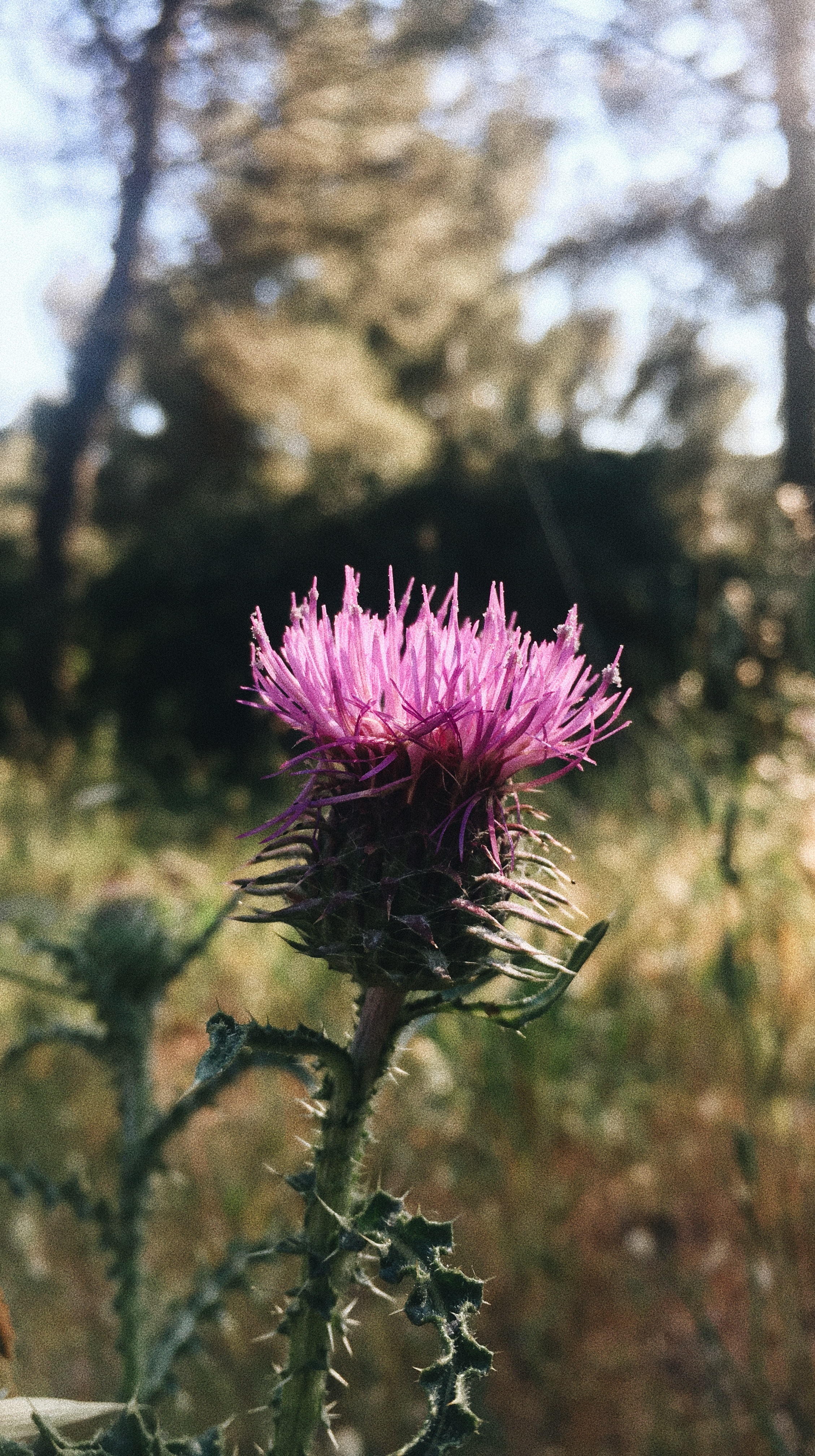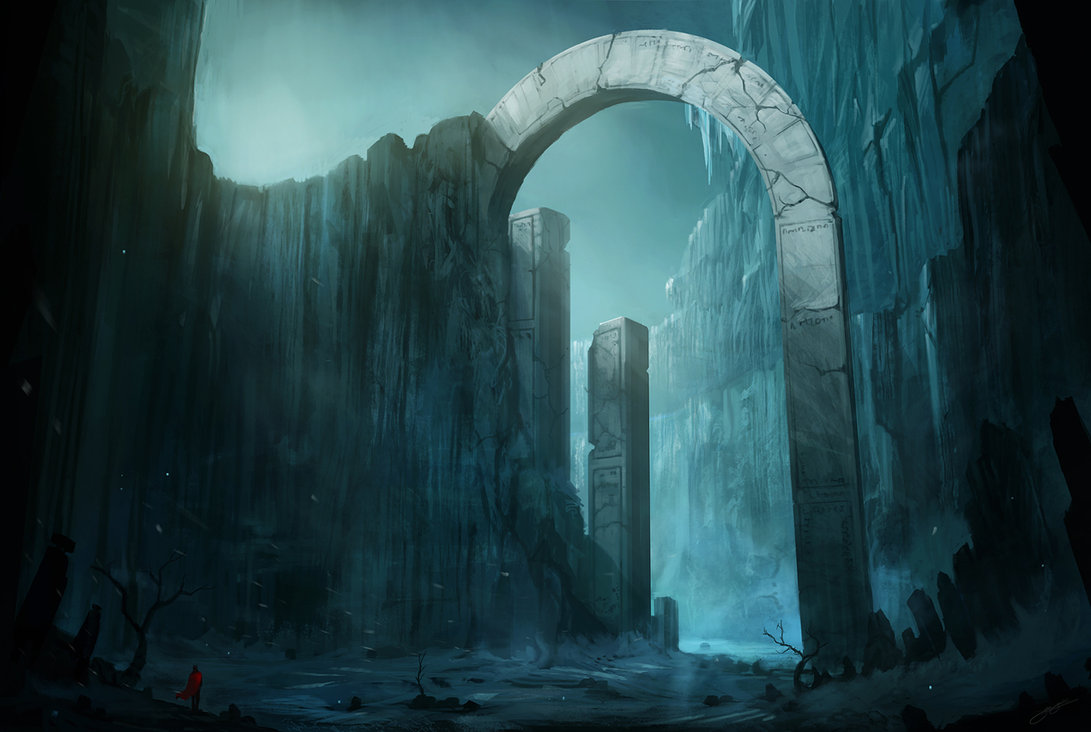Royal Thistle
"A thistle a day keeps the Bloodlung away. Drink tea at night, and you'll wake up alright."
Overview
Royal Thistle, more commonly known as Wheezing Thistle or Whispering Thistle, is the symbol of The Máirtín Royal Family. While it may look like a mere nuisance weed, those familiar with the plant's uses know it to be invaluable. Not only can most parts of the plant be harvested for food, but it has strong medicinal powers, and plays an incredibly important role in the ecosystem of Éirigh. But beware, gatherers: Royal Thistle is nearly always found in the embrace of poisonous hemlock.
What's in a Name?
Royal Thistle is known by many names throughout the Kingdom, the most common of which include Wheezing Thistle and Whispering Thistle. The exact etymology of these names has been lost to history, but it is accepted by most scholars that Wheezing Thistle came first, arising from its medicinal uses. Most believe the name Whispering Thistle comes from the practice of Thistle Scrying, but some scholars have theorized it was simply a mondegreen of Wheezing Thistle.
Basic Information
Anatomy
Wheezing Thistle is a tall biennial that forms a rosette of leaves and a taproot up to 70cm long in the first year. In the second year, and rarely the third or fourth, it develops a 1-1.5m tall flowering stem. The plant can grow up to 1.8m tall in total. The stem is winged, with spines at the tips of each wing along its full length.
The leaves are heavily spined, deeply lobed in a spear shape, and dark grey-green in color. The basal leaves can grow up to 30cm long, with smaller leaves growing on the upper part of the stem. The full flower head is usually 2.5-5cm in diameter. Flowers of the Wheezing Thistle range from dark pink to deep purple, and all the florets hold a similar form, with no division into discs or rays.
The seeds of the Wheezing Thistle are 5mm long with a downy pappus that assists with wind dispersal. Before the seeds are released, this pappus down gives the plant a white, wooly fringe. While the Wheezing Thistle most commonly germinates with the late harvest rains, it can continue to germinate throughout the year, allowing for thickets of the plant to form relatively quickly. The seeds can remain viable in soil for up to 20 years, making Wheezing Thistle immensely difficult to get rid of.
Reproduction
As with most thistles, the Whispering Thistle contains both reproductive organisms, and can reproduce without external pollination. The plant flowers in the final stages of seed maturation, which takes approximately 2 years. Seeds are then distributed by wind, mud, water, and ants, as well as in the feces of various songbirds. Despite their ability to remain in the soil bank for decades, Whispering Thistle seeds typically germinate shortly after the first rainfall following their dispersal.
Ecology and Habitats
The Royal Thistle is seen as a nuisance weed because it is attracted to heavily grazed pastures, gardens, and other disturbed sections of ground. Due to its sharp spines and ability to shore up in the soil bank, it can be difficult to remove, and can prevent livestock and other animals from grazing in areas it has taken over.
However, despite its label as a noxious weed, Royal Thistle serves many purposes in the environment. As one of the largest producers of nectar for pollinators, it is a vital part of the pollinator food chain. The seeds of the Royal Thistle are an important source of food for many songbirds, who use the down from its seeds in their nests. It can also be harvested as a food source for humans, and many parts of the plant have immense medicinal value.
Additional Information
Uses, Products & Exploitation
As much of a nuisance as Whispering Thistle can be, there are many uses for this plant. The flower buds can be harvested, cooked, and eaten as an artichoke substitute, while the flower petals are commonly used to make a bright yellow dye. The stems of the plant can be boiled and eaten, much like asparagus or rhubarb.
But perhaps the most valuable parts of the Whispering Thistle are the leaves, seeds, and roots. A decoction of the roots can be used as an astringent to diminish discharges of mucous, or as a poultice for sore and rheumatic joints. Tea made from the seeds and leaves of a young plant has been shown to aid with congestion of the lungs and heart, and can even be used to combat the symptoms of Bloodlung.
Thistles & Divination
Thistles of all kinds are recognized as the sacred plant of Scrios, god of chaos and rebellion, and they have been used as a divination tool in Éirigh for hundreds of years. While most prefer to work with kinder gods and gentler forms of divination, Thistle Divination has seen a sort of resurgence in popularity following the First Great Dynastic Shift thanks to The Máirtín Royal Family.
There are two main methods of thistle divination: scattering and scrying.
Scattering
This is the most common method of thistle divination, in which the practitioner simply collects the seeds of a young thistle and scatters them over a clean cloth. The practitioner then examines the patterns they form. Scattering may form an image that gives the practitioner a strong impression or vision of the future. In other cases, a practitioner may focus on how the seeds have fallen, using specific patterns and shapes to tell the future. (Ex: A trail of seeds that splits at the end indicates you are coming to a major crossroads in your life and must choose your path wisely, while seeds forming clear triangles are a sign that unexpected good fortune will fall on you.)
Scrying
This method is seen as barbaric by most of society, but those that use it believe Scrios looks kindly on those willing to brave pain and social scorn in the search for wisdom. In thistle scrying, the practitioner collects a small dish of water from a fresh, flowing stream, then pricks or cuts themselves with the spine of a young thistle, and allows blood to drip into the dish. The reading is taken by watching how the blood interacts with the water, and practitioners place great emphasis on visions or impressions inspired by the reaction, rather than searching for recognizable patterns.
Symbiotic and Parasitic organisms
Like Wheezing Thistle, hemlock prefers to grow from disturbed ground, and one is rarely found without the other. The thistle provides ample shade and support for the hemlock to grow thick and strong, making it difficult for all but the most experienced gatherers to safely collect the edible and medicinal parts of the plant. It is not uncommon for unscrupulous apothecaries to package dried leaves from both plants together, which has caused many to fall ill, sometimes with fatal results.
Quick Facts
Wheezing Thistle, Whispering Thistle
The Scrying King
While it has never been confirmed, many believe that King Máirtín I used Thistle Scrying to inspire the disastrous and ruthless plot for revenge that ultimately lead to The First Great Dynastic Shift. He has been seen to use this method of divination while making decisions as a ruler, and there are many rumors that he uses Thistle Scrying to test the loyalty and honesty of his advisors. It is said King Máirtín's call for these tools of divination is as loud and definitive as a death knell -- a fitting metaphor, as the sound of his executioner's drum often follows.
Bloodlung
Bloodlung gets its name from the horrific late stages of the disease, in which the patient is likely to experience water retention around their heart and lungs, leading to internal hemorrhaging. Many of those afflicted ultimately meet a dark end, drowning as their own blood fills their lungs.
The disease is caused by a variety of heart conditions, some of which are hereditary. With limited access to medical care, detection of Bloodlung is immensely difficult until the patient is in critical condition, and it is often fatal in its later stages. When caught early, or a family history is known, Wheezing Thistle is part of a vital treatment plan.
Wheezing Thistle as Treatment
In the early stages of Bloodlung, or for those with a known family history, drinking a tea brewed with Wheezing Thistle seeds and dried leaves before bed is one of the best preventative treatments available.
For most, a healthy diet with minimal salt, plenty of exercise, and Wheezing Thistle tea every night is enough to ensure a long and mostly healthy life. However, in many hereditary cases, the disease will progress regardless of treatment. In the late stages of the disease, a rigorous combination of bloodletting and Wheezing Thistle tea are used to keep the patient comfortable for as long as possible.















I really love that you've included so many different kinds of uses for what is called a nuisance weed! There's a lot of great thought that went into this :D The divination section is great, I like the comparisons between scrying and scattering.
Thank you so much!